Common Bottlenose Dolphin, Tursiops truncatus
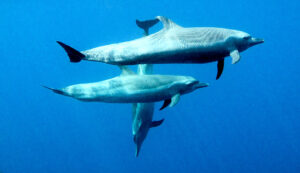 Common Bottlenose Dolphin, Tursiops truncatus. Underwater photograph taken in Zihuatanejo Bay, Guerrero, March 2018. Photograph courtesy of Maude Jette, Dive Zihuantanejo, www.Divezihuantanejo.com. Identification courtesy of Bob Hillis, Ivins, Utah.
Common Bottlenose Dolphin, Tursiops truncatus. Underwater photograph taken in Zihuatanejo Bay, Guerrero, March 2018. Photograph courtesy of Maude Jette, Dive Zihuantanejo, www.Divezihuantanejo.com. Identification courtesy of Bob Hillis, Ivins, Utah.
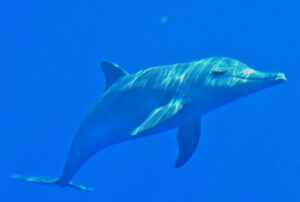 Common Bottlenose Dolphin, Tursiops truncatus. Underwater photograph taken in coastal waters off Kona, Hawaii, September 2015. Photography and identification courtesy of Bob Hillis, Ivins, Utah.
Common Bottlenose Dolphin, Tursiops truncatus. Underwater photograph taken in coastal waters off Kona, Hawaii, September 2015. Photography and identification courtesy of Bob Hillis, Ivins, Utah.

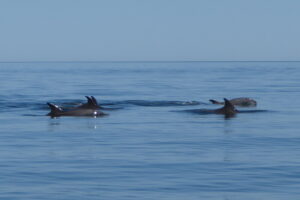
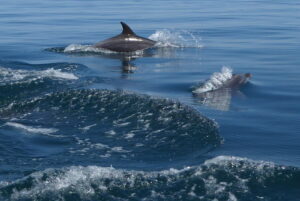 Common Bottlenose Dolphin, Tursiops truncatus. Photograph taken just east of Isla Colorado, Loreto, Baja California Sur, October 2019. Identification courtesy of Bob Hillis, Ivins, Utah.
Common Bottlenose Dolphin, Tursiops truncatus. Photograph taken just east of Isla Colorado, Loreto, Baja California Sur, October 2019. Identification courtesy of Bob Hillis, Ivins, Utah.
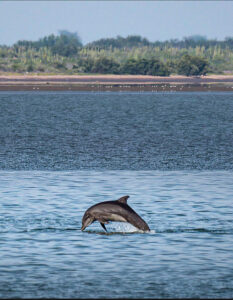 Common Bottlenose Dolphin, Tursiops truncatus. Photograph taken within the Sea of Cortez off the west coast of the mainland, December 2019. Photograph and identification courtesy of David F Smith, Alamos, Sonora.
Common Bottlenose Dolphin, Tursiops truncatus. Photograph taken within the Sea of Cortez off the west coast of the mainland, December 2019. Photograph and identification courtesy of David F Smith, Alamos, Sonora.
Phylogeny: The Common Bottlenose Dolphin, Tursiops truncatus (Montagu, 1821), is a member of the Delphinidae Family of Oceanic Dolphins. In Mexico, this species is known as the delfín nariz de botella. These are the dolphins of “Flipper” and Ocean Aquarium fame, as well as the artwork of the ancient Greeks and Romans. Their name refers to the shape of their stout beak.
Morphology: The Common Bottlenose Dolphin has a mouth that appears to be grinning and the dorsal fin is moderate in height and falcate (concave posteriorly). Dorsally they are vary subtly from light gray to medium gray in color and light gray, pinkish or whitish ventrally. Adults often show battle scars from being raked by the teeth of competing dolphins and from Cookiecutter Sharks, Isistius brasiliensis. Common Bottlenose Dolphins reach a maximum of 3.81 m (12 feet 6 inches) in length and 500 kg (1,100 lbs) in weight.
Habitat and Distribution: Common Bottlenose Dolphins may be found as individuals or in schools containing hundreds of individuals. They can be found in widely differing habitats including bays and estuaries, along surf beaches, and far offshore. They have been recorded diving to depths in excess of 1,000 m (3,280 feet). They are found worldwide in tropical and temperate seas. In the Eastern Pacific, they range from British Columbia to Peru, including the entire Sea of Cortez.
Diet: The Common Bottlenose Dolphin feed on fish, cephalopods, and crustaceans that are found both in the water column or benthic zones. They employ various feeding techniques such as herding fish onto the beach, using bubble curtains to herd fish in to tight schools, tail slapping fish to stun them, and hunting close to human fishing activities to pick off lost or discarded fish.
Predators: The Common Bottlenose Dolphin are preyed upon by large sharks and orcas, though some have been killed by large stingrays.
Behavior: Common Bottlenose Dolphins have a reputation for being friendly, with many demonstrating an affinity for human contact. They also seem to enjoy playing, including surfing ocean waves and bow waves. This playfulness can become ugly, when small groups of these dolphins abuse other, smaller, marine mammals for sport. These dolphins are highly communicative, intelligent, and social.
Life Cycle: The Common Bottlenose Dolphin have have life-spans of up to forty years, with some females living until sixty years or more. Female dolphins reach sexual maturity and begin reproducing between five and ten years of age, while male dolphins don’t reach sexual maturity until later, between eight and thirteen years of age.
Threats: Although the Common Bottlenose Dolphin is currently listed as Least Concern on the IUCN Red List, there are a variety of factors that pose a threat to the dolphin populations. Dolphins are easily entangled in commercial fishing gear like gillnets, seines, trawls, trap pots, and longlines. Biotoxins like algal blooms also pose a large threat to dolphins and often cause unexpected mortalities.
Synonyms: There are more than two dozen synonyms listed for this species on the World Register of Marine Species (WORMS).